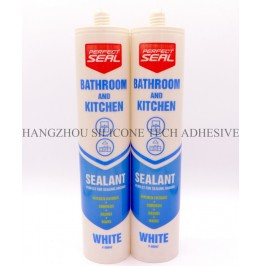Understanding the Curing Process of Sealants Before Mechanical Stress Exposure
Sealants require a critical curing period to develop their full mechanical properties and adhesion strength. This phase determines how effectively the material can resist external forces such as impacts, vibrations, or joint movements. The curing timeline varies based on material composition, environmental conditions, and application thickness, with implications for project scheduling and safety protocols.

Key Factors Influencing Curing Time
Material Composition
Silicone-based sealants typically take 24–48 hours to fully cure under standard conditions, while polyurethane variants may require up to 7 days for complete hardening. Hybrid polymer sealants, commonly used in construction, often reach full cure within 24 hours but may have varying skin-formation times (1–2 hours). Structural sealants designed for high-performance applications may cure more slowly, prioritizing strength over speed.
Environmental Conditions
Temperature and humidity play pivotal roles. Optimal curing occurs between 4°C and 38°C, with deviations extending drying times. High humidity can double the curing duration, while freezing temperatures or direct sunlight may compromise adhesion. For example, a silicone sealant applied at 21°C may cure in 24 hours, but the same product in cold or humid environments could take 48 hours or longer.
Application Thickness and Joint Design
Thicker layers of sealant require more time to cure uniformly. Proper joint design, including width-to-depth ratios, ensures even stress distribution and reduces premature failure risks. Joints installed during seasonal temperature extremes (e.g., summer tension or winter compression) may experience uneven strain, affecting long-term durability.
Stages of Curing and Mechanical Resistance
Practical Guidelines for Post-Application Handling
Avoid Disturbing the Sealant During Curing
Restrict access to freshly applied sealants to prevent indentation or dislodgment. For high-traffic areas, use temporary barriers or signage to minimize contact until full cure is achieved.
Monitor Environmental Controls
Maintain consistent temperature and humidity levels in enclosed spaces. Use dehumidifiers or heaters if necessary, but avoid placing sealants near direct heat sources, which may create uneven curing.
Adjust Timelines for Complex Joints
Deep or irregular joints may require extended curing periods. Consult manufacturer guidelines for specific recommendations, as some products include accelerators or retarders to modify drying times.
Long-Term Durability Considerations
Even after reaching full cure, sealants remain susceptible to degradation from UV exposure, chemicals, or repeated mechanical stress. Regular inspections can identify early signs of wear, such as cracking or discoloration, allowing for timely maintenance. Properly cured sealants in well-designed joints can last decades, reducing the need for frequent reapplications and associated costs.
By adhering to these principles, contractors and facility managers can ensure sealants achieve their intended lifespan while minimizing risks of premature failure. Understanding the interplay between material science and environmental factors is essential for optimizing performance in diverse applications.
Copyright 2019 by Hangzhou Silicone Tech Adhesive Co., Ltd. All rights reserved.
Bathroom Sealant | Acrylic Sealant | Dow Corning 795 | Aquarium Sealant | Dow Corning 732 | Clear Silicone Sealant | Polysulfide Sealant | Glazing Sealant | Mirror Sealant | IG Sealant
Powered by Onepound